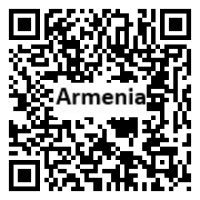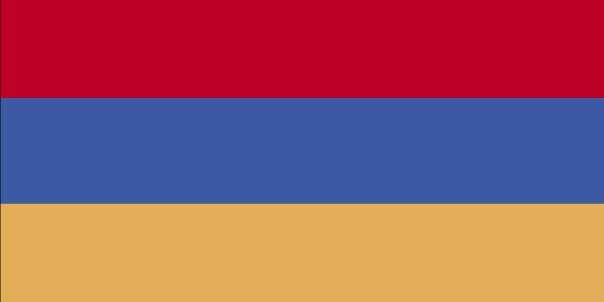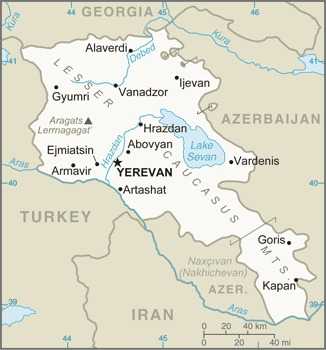Introduction
Background
Armenia is a landlocked country in Southwestern Asia or Eurasia. It is situated at the gateway between Western Asia and Eastern Europe and is bordered by Azerbaijan, Georgia, Iran, and Turkey. Located in the Lesser Caucasus Mountains, Armenia is a mountainous region with fast-flowing rivers.
Geography
Area
total : 29,743 sq km
land: 28,203 sq km
water: 1,540 sq km
Climate
highland continental, hot summers, cold winters
Natural resources
small deposits of gold, copper, molybdenum, zinc, bauxite
People and Society
Population
total: 2,976,765
Ethnic groups
Armenian 98.1%, Yezidi 1.1%, other 0.8% (2022 est.)
Languages
Armenian (official) 97.9%, Kurmanji (spoken by Yezidi minority) 1%, other 1.1%; note - Russian is widely spoken (2011 est.)
Religions
Armenian Apostolic Christian 95.2%, other Christian 1.6%, other 0.9%, none 0.6%, unspecified 1.7% (2022 est.)
Population growth rate
-0.42% (2024 est.)
Government
Government type
parliamentary democracy; note - constitutional changes adopted in December 2015 transformed the government to a parliamentary system
Capital
name: Yerevan
Executive branch
chief of state: President Vahagn KHACHATURYAN (since 13 March 2022)
head of government: Prime Minister Nikol PASHINYAN (since 10 September 2021)
Legislative branch
description: unicameral National Assembly (Parliament) or Azgayin Zhoghov (minimum 101 seats, with additional seats allocated as necessary and generally changing with each parliamentary convocation; current - 107 seats; members directly elected in single-seat constituencies by closed party-list proportional representation vote; members serve 5-year terms; four mandates are reserved for national minorities; no more than 70% of the top membership of a party list can belong to the same sex; political parties must meet a 5% threshold and alliances a 7% threshold to win seats; at least three parties must be seated in the Parliament)
Economy
Economic overview
EEU-and CIS-member state but seeking more EU and US trade; business-friendly growth environments; stable monetary regime but vulnerable demand economy; key copper and gold exporter; persistent unemployment; large diaspora and remittances
Real GDP (purchasing power parity)
$57.728 billion (2023 est.)
$53.108 billion (2022 est.)
$47.165 billion (2021 est.)
Real GDP per capita
$20,800 (2023 est.)
$19,100 (2022 est.)
$16,900 (2021 est.)
Agricultural products
milk, potatoes, grapes, tomatoes, vegetables, wheat, watermelons, apricots, apples, barley (2022)
Industries
brandy, mining, diamond processing, metal-cutting machine tools, forging and pressing machines, electric motors, knitted wear, hosiery, shoes, silk fabric, chemicals, trucks, instruments, microelectronics, jewelry, software, food processing
Exports
$14.13 billion (2023 est.)
$10.038 billion (2022 est.)
$5.012 billion (2021 est.)
Exports - partners
Russia 41%, UAE 9%, China 7%, Georgia 4%, Switzerland 4% (2022)
Exports - commodities
copper ore, gold, diamonds, tobacco, iron alloys (2022)
Imports
$14.279 billion (2023 est.)
$10.186 billion (2022 est.)
$6.12 billion (2021 est.)
Imports - partners
Russia 23%, UAE 19%, China 10%, Georgia 5%, Iran 5% (2022)
Imports - commodities
postage stamps/documents, cars, broadcasting equipment, refined petroleum, natural gas (2022)
Exchange rates
drams (AMD) per US dollar -
Page last updated: Wednesday, July 24, 2024




